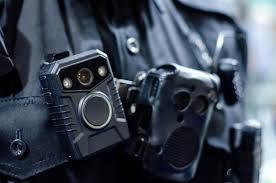The Body-Worn Camera Market Growth Rate is currently experiencing a period of exceptionally strong and accelerated expansion, with the market's trajectory being propelled by a powerful convergence of social, political, and technological forces. The primary engine of this growth is the intense and sustained global demand for greater transparency, accountability, and trust between law enforcement agencies and the communities they serve. In the wake of numerous high-profile and controversial incidents of police use-of-force, there has been a groundswell of public and political pressure for the widespread adoption of body-worn cameras. These devices are seen as a critical tool for providing an unbiased, objective record of events, which can be used to verify accounts, de-escalate potentially volatile situations, and provide crucial evidence for investigations and legal proceedings. This powerful social and political mandate, often backed by government funding and legislative requirements, is the single most significant factor driving police departments around the world to either initiate or expand their body-worn camera programs, fueling the market's high growth rate.
A crucial catalyst for the market's rapid growth is the clear and demonstrable benefits that the technology provides to the law enforcement agencies themselves. Beyond the public-facing benefits of accountability, body-worn cameras have proven to be a valuable tool for officer training, safety, and evidence collection. The video footage can be used in training scenarios to review an officer's performance in a critical incident, highlighting both best practices and areas for improvement. The mere presence of a recording device has also been shown to have a "civilizing effect," often leading to a reduction in both civilian complaints against officers and incidents of use-of-force, which can protect officers from false accusations and reduce departmental liability. Furthermore, the video captured by the cameras serves as invaluable and irrefutable evidence for criminal prosecutions, often leading to a higher rate of guilty pleas and saving significant time and resources in the judicial process. This dual value proposition—improving both community relations and internal operations—is a powerful driver of adoption and a key contributor to the market's impressive growth rate.
Furthermore, the market's growth is being significantly propelled by the expansion of the technology into new and adjacent vertical markets beyond traditional policing. While law enforcement remains the largest end-user segment, a wide range of other professions are now recognizing the value of body-worn cameras. Private security firms are increasingly equipping their guards with cameras to document incidents and protect their clients' property. Emergency medical services (EMS) and fire departments are using the technology for training and to document their response to critical events. Transportation workers, such as bus drivers and train conductors, are being equipped with cameras to deter assaults and record interactions with the public. Even in sectors like retail and healthcare, body-worn cameras are being used by employees to enhance safety and document events. This diversification of use cases is significantly broadening the total addressable market and creating powerful new revenue streams for vendors, ensuring that the industry's strong growth rate is not solely dependent on the law enforcement sector.

